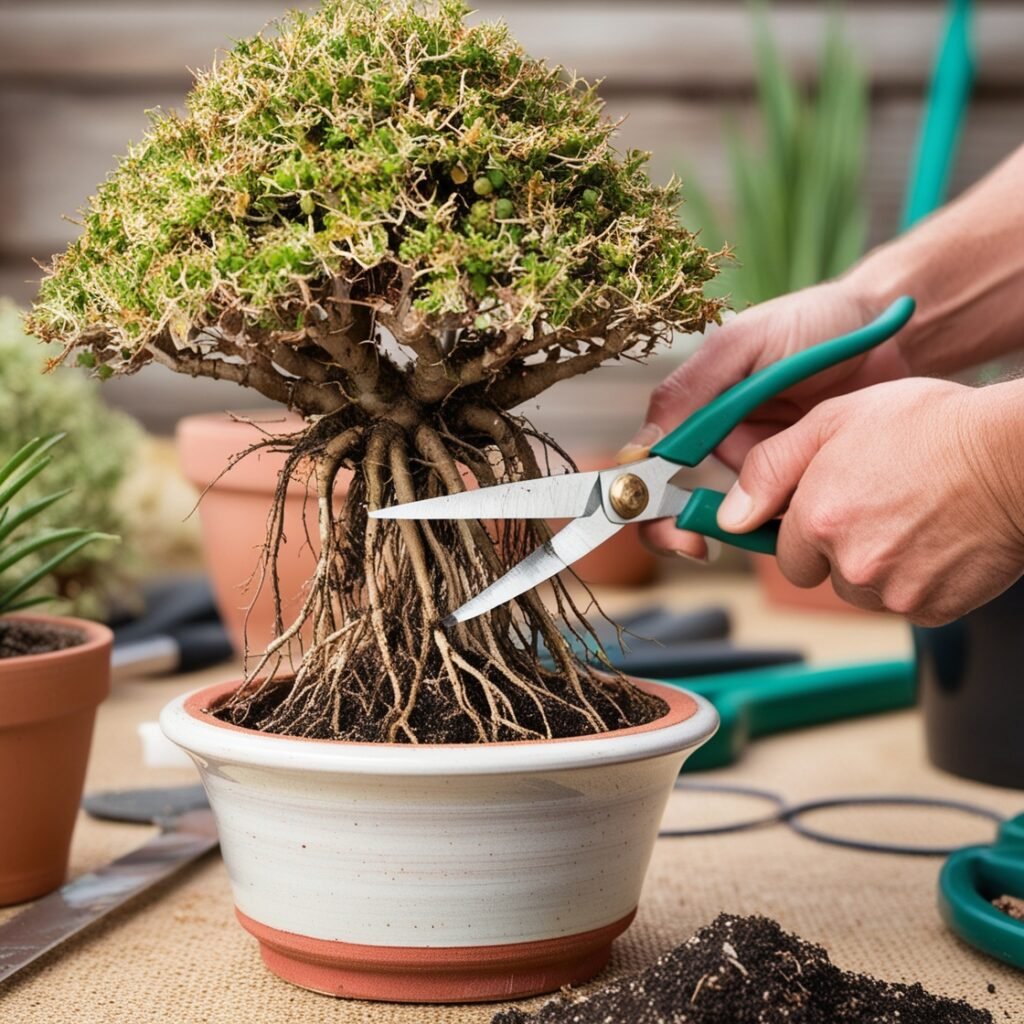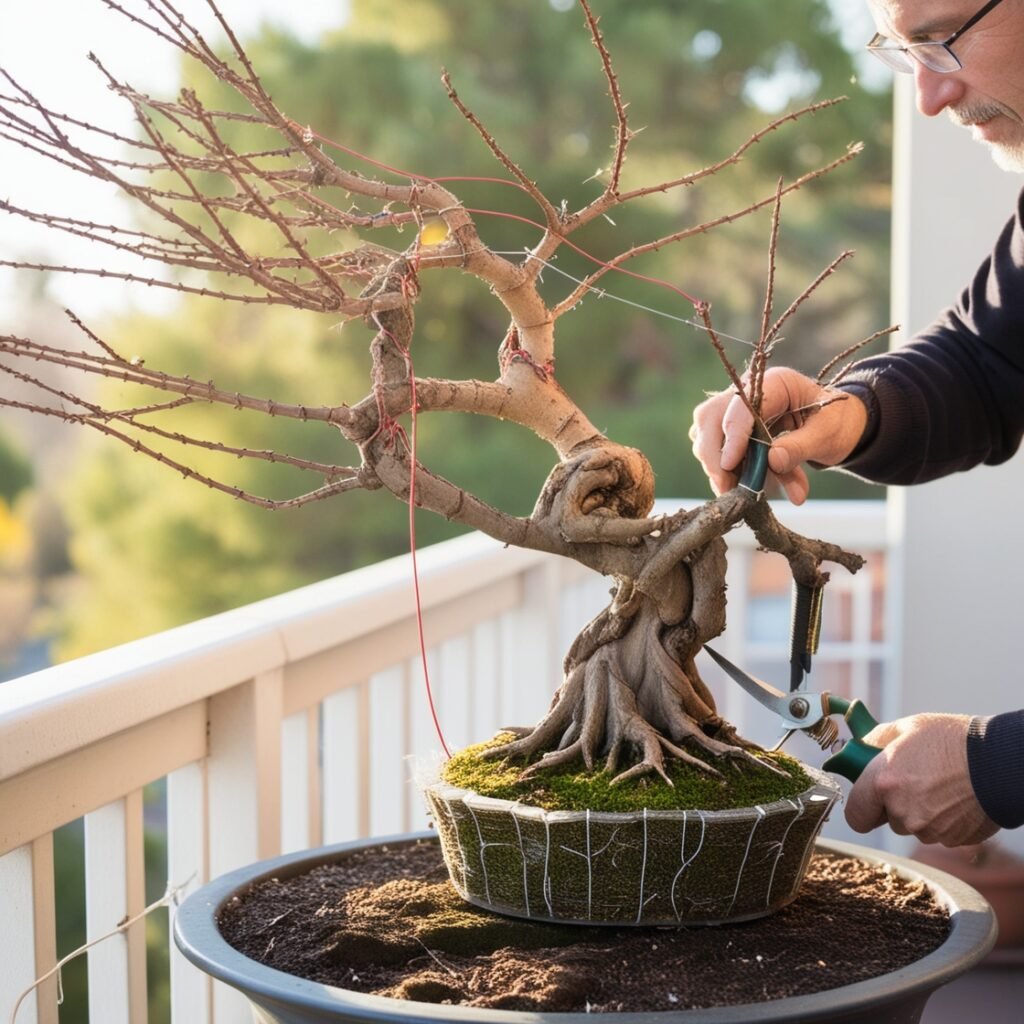
Adenium Obesum is more commonly known as the Desert Rose Bonsai Tree is one of the most beautiful and rare houseplants that you could have in your home. These stunning plants belong in arid regions of Africa and Arabian Peninsula.
Although not a traditional bonsai species, the Desert Rose has quickly become beloved by many people in the bonsai community due to its beautiful flowers, thick trunk, and relatively hardiness that can withstand high temperatures.
So, this guide will show you how to care for and style your Desert Rose bonsai tree from the moment you get it, all the way through maintaining a happy plant.
Desert Rose Bonsai Tree Guide
This is a succulent plant, not an actual bonsai tree closer to an airplant that can grow in a desert. While, Desert Rose on the other hand loves arid, warm conditions so is ideal for those in tropical or subtropical countries. The bole and caudex, which is the thickened area of the trunk where water is stored, have a unique appearance that can be manipulated to standard bonsai styles.
Moreover, the bright trumpet shaped flowers of the Desert Rose are what makes them most dendritic and these can be pink, red, white or yellow in color. They bloom in the warm months of the year, adding a beautiful contrast to different from the plant fleshy trunk.
Selecting and Prepping For Bonsai Your Desert Rose
Let’s know details about selecting and prepping the bonsai desert rose! This part will help you to get the highest benefit-
1. Selecting the Right Plant
In choosing a Desert Rose for your bonsai endeavor, find a healthy plant with a caudex. It will be the stand out feature of your bonsai. A plant with many branches will allow you to do the most shaping.
You can buy Desert Rose plants at plant nurseries or garden centers, or online. When selecting a plant, look for the one with clean leaves and stem without pests and diseases, vibrant foliage and solid trunk. Look for a plant with great future, one that has not already started to wilt or root rot.
2. Repotting and Root Pruning
The first thing you do with your Desert Rose plant that you would like to turn into a bonsai is repot it. Desert Rose plants require well-draining soil, giving them a reason to use a bonsai soil mix that incorporates sand, perlite, and pumice. These materials help water to drain away fast, removing the potential of root rot that will surely kill your plants.
Cut the roots before you finally plant your bonsai in its new container Cut off long dangling roots with sharp, sterile pruning shears for a tighter root system. Reducing the roots will also allow for more room to grow into a large root system or cylinder over many years.
Taking Care of a Desert Rose Bonsai

Here are the taking care of desert rose bonsai and you will be able to plant these bonsai for your successful bonsai gardening. Let’s see!
1. Watering
It does not need to be watered as much as other trees and do not like continuous moisture on the leaves. It is a water-storing succulent in its caudex and can sustain even under dry conditions. Desert Rose bonsai are prone to overwatering which can quickly result in root rot.
So to have this not happen give it a good drink but make sure it gets enough time for the soil to completely dry out before adding more water. This might mean watering your bonsai as little as once in every 7 -10 days for warmer months and even less when positioned indoors or during the cooler months.
2. Lighting
These bonsai require full, direct sunlight to grow strong. In their natural environment they are plants of open, sunny places as you can imagine it is important to replicate this when planting lavender. Select a place that gets at least 6-8 hours of sunlight for your balcony bonsai.
If growing your bonsai indoors, ensure it is located near a southward facing window or under grow lights for enough light. One problem about less sunlight is that your Desert Rose can grow very thin and less flowers.
3. Temperature and Humidity
Desert Rose bonsai trees are warm weather plants which have temperature preferences between 65°F to 90°F. These plants do not handle frost very well so if you live in a cold climate or experience winter, it is recommended to keep bonsai indoors from October to May! In the summer you can take your bonsai outside to benefit from a warm breeze however, if nights are forecast below 50°F bring it indoors.
Because the Desert Rose is a plant that thrives in arid conditions, it does not need high humidity levels. This makes it perfect for indoor areas with lower levels of humidity.
Desert rose bonsai shaping and styling

Here you will get the shaping and styling of the desert rose bonsai. You will get all details about these two terms-
1. Pruning
Prune as needed to keep your Desert Rose bonsai tree within the desired form. By trimming, you help stimulate new growth, maintain the size of the tree, and be able to form it into one of your classic bonsai styles. That said, pruning should be done in the plant’s growing season when it can easily recover from cuts.
Trim long or leggy branches with sharp, clean shears and trim each branch just enough to help keep the plant in well balanced shape. To keep the tree looking more natural, prune branches all the way back to outward-facing nodes so new growth grows in an outside direction rather than toward the center of the tree.
2. Wiring
THE Desert Rose bonsai is generally less suited for wiring than other species but it will still allow you to form and shape your tree. The branches of a Desert Rose are much more brittle compared to other bonsai species, so you will want to tread lightly when using wire.
The decision to wire or not is up to you, but if you go with wiring, gently lay the wire over the branches and tweak as you go along. You will have to remove the wire after some months when you see that the plant grows around it and preventing scarring.
3. Caudex Enhancement
The most unique characteristic of the Desert Rose bonsai is its fat caudex. In order to improve this you can remove the plant occasionally by lifting a little when repotting, so more of the caudex as possible will float above the ground. This results in a bolder, more intense aesthetic over time.
And repotting every 2-3 years will root prune and develop the caudex to keep your Desert Rose bonsai looking one of a kind.
How to Fertilize a Desert Rose Bonsai?
Desert Rose bonsai trees are not heavy feeders, however regular fertilization during the growing season is of great benefit. Apply a balanced, half strength water-soluble fertilizer every 4-6 weeks during the spring and summer. This aids you in growing healthy and gifting your plant with beautiful, colourful flowers.
Do not fertilize in the winter months as they will go dormant and do not need much liquid nutrients.
Common Pests and Problems
Desert Rose bonsai trees are tough trees but they can be attacked by crippling pests — like aphids, red spider mites and mealybugs. Locate plants and soil, check regularly for signs of webs or tiny webbing on stems, yellowing leaves or stickiness. If you do find any pests, treat your bonsai with a little insecticidal soap or neem oil.
It can also suffer from root rot, often due to over watering. A soft mushy caudex and yellowing dropping lower leaves might be other indications that the roots are rotting. Any of these would mean that the watering should be reduced immediately, and the soil allowed to dry out.
Conclusion
The Desert Rose bonsaiHonestly, the Burning Bush is not really a true bonsai tree, but rather an extremely well rounded desert type of tree. The thick, sculptural trunk and colorful flowers of Portulacaria make it an eye-catching species, and its ability to withstand drier conditions provides a unique cultivation experience compared with the standard bonsai fare.
So, with proper watering, light and pruning care, you will learn to grow an amazing looking Desert Rose bonsai that may last years.
If you are a beginner or seasoned connoisseur in bonsai, you will experience great satisfaction and visual enjoyment with the Desert Rose. With patience and all the care necessary, you can among many other herbs have her in your home or garden showing of its desert beauty.

